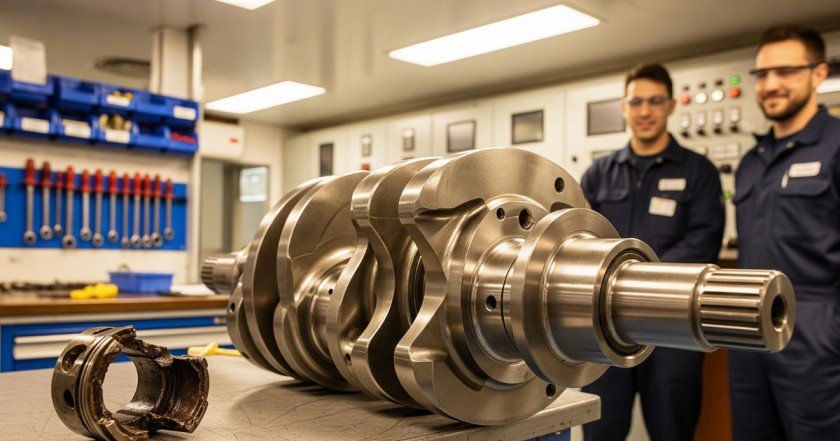
In the marine industry, downtime is the enemy. Every hour a vessel is out of commission whether it¡¯s a fishing boat, cargo ship, or offshore rig means lost revenue and frustrated customers. A high-quality crankshaft, the heart of a marine engine, can make all the difference in keeping operations smooth and minimizing those costly delays.
Let¡¯s explore how investing in a top-notch crankshaft reduces downtime for marine businesses, with a practical and conversational perspective.
The Role of the Crankshaft in Marine Engines
The crankshaft converts the up-and-down motion of pistons into rotational power, driving the propeller or other systems. In marine environments, where engines face relentless saltwater, high loads, and constant vibrations, a crankshaft¡¯s quality directly impacts reliability.
A poorly made crankshaft can crack, wear out, or misalign, grinding operations to a halt. High-quality crankshafts, like those from manufacturers such as MAN Energy Solutions or Caterpillar, are designed to withstand these harsh conditions, keeping your vessel running.
Enhanced Durability for Harsh Marine Conditions
Marine engines operate in a brutal environment corrosive saltwater, extreme temperatures, and heavy workloads are the norm. High-quality crankshafts are forged from premium materials like alloy steel or micro-alloyed steel, often with advanced treatments like nitriding or induction hardening.
These processes boost resistance to wear, fatigue, and corrosion. A fishing fleet operator I know shared how upgrading to a high-grade crankshaft cut their engine repairs by half, keeping boats on the water longer. Regular maintenance, like checking oil quality and alignment, further extends crankshaft life.
Precision Engineering for Smoother Performance
A well-crafted crankshaft is machined to exact tolerances, ensuring balanced operation and minimal vibration. Poorly balanced crankshafts can stress bearings, seals, and other components, leading to breakdowns. High-quality crankshafts, like those from W?rtsil?, use precision engineering to maintain smooth performance under high loads, reducing the risk of unexpected failures.
This reliability is critical for marine businesses where a single breakdown can delay cargo deliveries or cancel fishing trips. Operators report fewer vibrations and quieter engines, which also improves crew comfort.
Reducing Maintenance and Repair Costs
Downtime often stems from emergency repairs or frequent maintenance caused by component failures. High-quality crankshafts are built to last, requiring less frequent overhauls compared to cheaper alternatives. Their robust design minimizes issues like crankshaft bending or journal wear, which can sideline a vessel for days.
By investing upfront in a premium crankshaft, marine businesses save on repair costs and avoid the logistical nightmare of sourcing parts in remote ports. Pair this with a proactive maintenance schedule, and downtime shrinks significantly.
Supporting High-Performance Operations
Marine businesses, especially in competitive sectors like shipping or offshore support, rely on engines that can handle intense workloads. High-quality crankshafts deliver consistent power output, even during long voyages or heavy-duty tasks like towing.
This reliability ensures vessels stay on schedule, meeting tight deadlines without unexpected stops. For example, a supply vessel operator noted that a high-grade crankshaft kept their engine running flawlessly during a month-long offshore project, avoiding costly delays.
Why It¡¯s a Smart Investment
A high-quality crankshaft minimizes downtime by offering durability, precision, and reliability in the toughest marine conditions. It reduces maintenance headaches, prevents costly breakdowns, and keeps your vessel operational when it matters most.
For marine businesses in 2025, where efficiency is king, investing in a crankshaft from trusted brands like Engine-Tek, MAN, Caterpillar, or W?rtsil? is a no-brainer. Check with your engine supplier for options tailored to your vessel, and keep those engines humming to stay ahead in the rough seas.















